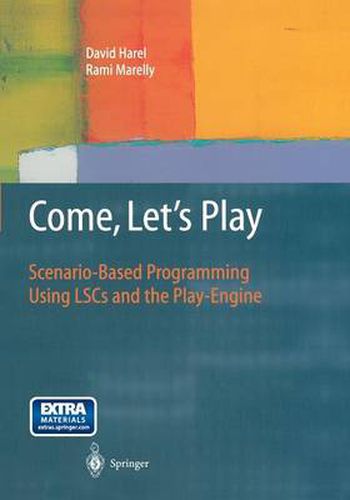Readings Newsletter
Become a Readings Member to make your shopping experience even easier.
Sign in or sign up for free!
You’re not far away from qualifying for FREE standard shipping within Australia
You’ve qualified for FREE standard shipping within Australia
The cart is loading…






This title is printed to order. This book may have been self-published. If so, we cannot guarantee the quality of the content. In the main most books will have gone through the editing process however some may not. We therefore suggest that you be aware of this before ordering this book. If in doubt check either the author or publisher’s details as we are unable to accept any returns unless they are faulty. Please contact us if you have any questions.
This book does not tell a story. Instead, it is about stories. Or rather, in technical terms, it is about scenarios. Scenarios of system behavior. It con centrates on reactive systems, be they software or hardware, or combined computer-embedded systems, including distributed and real-time systems. We propose a different way to program such systems, centered on inter object scenario-based behavior. The book describes a language, two tech niques, and a supporting tool. The language is a rather broad extension of live sequence charts (LSCs), the original version of which was proposed in 1998 by W. Damm and the first-listed author of this book. The first of the two techniques, called play-in, is a convenient way to ‘play in’ scenario based behavior directly from the system’s graphical user interface (QUI). The second technique, play-out, makes it possible to execute, or ‘play out’, the behavior on the QUI as if it were programmed in a conventional intra object state-based fashion. All this is implemented in full in our tool, the Play-Engine. The book can be viewed as offering improvements in some ofthe phases of known system development life cycles, e.g., requirements capture and anal ysis, prototyping, and testing. However, there is a more radical way to view the book, namely, as proposing an alternative way to program reactivity, which, being based on inter-object scenarios, is a lot closer to how people think about systems and their behavior.
$9.00 standard shipping within Australia
FREE standard shipping within Australia for orders over $100.00
Express & International shipping calculated at checkout
This title is printed to order. This book may have been self-published. If so, we cannot guarantee the quality of the content. In the main most books will have gone through the editing process however some may not. We therefore suggest that you be aware of this before ordering this book. If in doubt check either the author or publisher’s details as we are unable to accept any returns unless they are faulty. Please contact us if you have any questions.
This book does not tell a story. Instead, it is about stories. Or rather, in technical terms, it is about scenarios. Scenarios of system behavior. It con centrates on reactive systems, be they software or hardware, or combined computer-embedded systems, including distributed and real-time systems. We propose a different way to program such systems, centered on inter object scenario-based behavior. The book describes a language, two tech niques, and a supporting tool. The language is a rather broad extension of live sequence charts (LSCs), the original version of which was proposed in 1998 by W. Damm and the first-listed author of this book. The first of the two techniques, called play-in, is a convenient way to ‘play in’ scenario based behavior directly from the system’s graphical user interface (QUI). The second technique, play-out, makes it possible to execute, or ‘play out’, the behavior on the QUI as if it were programmed in a conventional intra object state-based fashion. All this is implemented in full in our tool, the Play-Engine. The book can be viewed as offering improvements in some ofthe phases of known system development life cycles, e.g., requirements capture and anal ysis, prototyping, and testing. However, there is a more radical way to view the book, namely, as proposing an alternative way to program reactivity, which, being based on inter-object scenarios, is a lot closer to how people think about systems and their behavior.